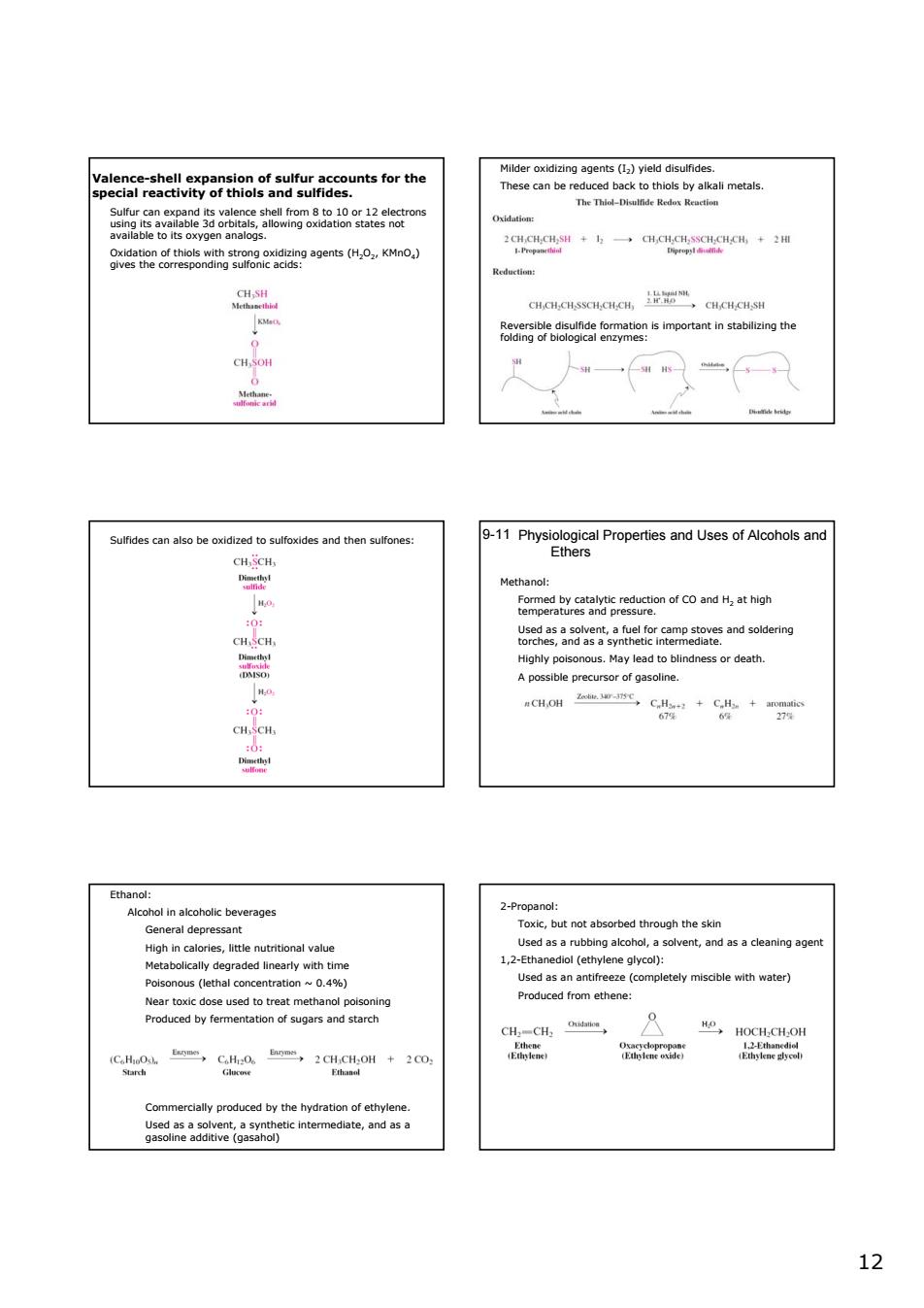正在加载图片...

Speni2hevarhioetautrseaunttorthe er axidizing agents (I)yield disulfides 9品 g9reuPegthe5aiht3eadang9emts0o.Knoj s can alsc des and then su fomegycaaeuconorcoandhatwoh se88gasategremRetoieandsolderne s or death General depr Used asa rubbingsvent,andasaceng +200 1212 Valence-shell expansion of sulfur accounts for the special reactivity of thiols and sulfides. Sulfur can expand its valence shell from 8 to 10 or 12 electrons using its available 3d orbitals, allowing oxidation states not available to its oxygen analogs. Oxidation of thiols with strong oxidizing agents (H2O2, KMnO4) gives the corresponding sulfonic acids: Milder oxidizing agents (I2) yield disulfides. These can be reduced back to thiols by alkali metals. Reversible disulfide formation is important in stabilizing the folding of biological enzymes: Sulfides can also be oxidized to sulfoxides and then sulfones: Physiological Properties and Uses of Alcohols and Ethers 9-11 Methanol: Formed by catalytic reduction of CO and H2 at high temperatures and pressure. Used as a solvent, a fuel for camp stoves and soldering torches, and as a synthetic intermediate. Highly poisonous. May lead to blindness or death. A possible precursor of gasoline. Ethanol: Alcohol in alcoholic beverages General depressant High in calories, little nutritional value Metabolically degraded linearly with time Poisonous (lethal concentration ~ 0.4%) Near toxic dose used to treat methanol poisoning Produced by fermentation of sugars and starch Commercially produced by the hydration of ethylene. Used as a solvent, a synthetic intermediate, and as a gasoline additive (gasahol) 2-Propanol: Toxic, but not absorbed through the skin Used as a rubbing alcohol, a solvent, and as a cleaning agent 1,2-Ethanediol (ethylene glycol): Used as an antifreeze (completely miscible with water) Produced from ethene: